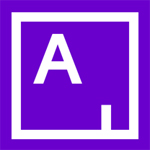
by Heather Corcoran
The sculptural canvases of Korean artist Kwang Young Chun’s “Aggregation” series are something of a paradox: these multifaceted abstract creations simultaneously conjure images of the natural world (distant forests, the ocean floor, cell formations, the cosmos) and the high-tech realm of information (pixels, computer code, Petri dishes).
To create these singular works, Chun begins by wrapping hundreds of tiny polystyrene wedges in delicate Korean mulberry paper or hanji, a material familiar from his childhood, when as a sick boy he would visit pharmacies full of remedies wrapped up in the paper, and which he rediscovered as an adult recovering from a cold in the 1990s. Each triangle is then individually dyed by hand with natural pigments like tea, clay, and herbs. Chun builds up the surface of the canvas from two to three dimensions by layering these tiny wrapped forms. As these discrete units multiply into a repeating pattern of similar objects, new images emerge from their multiplicity, as their seemingly random arrangements call to mind natural phenomenon like gnarled tree bark, crystal formations, or accumulations of rust—almost like Bosco Sodi’s earthy accumulations of pure pigment.
Chun began his career in the U.S. influenced by the work of the Abstract Expressionists, using color and form to address complex issues like the gap between ideals and reality in post-WWII America, and the chaos and struggles of the 1970s. It was only after returning to Korea that he developed his own style, one that uniquely references his heritage through the use of hanji paper. Each of these wrapped pieces became a cell or unit of information which existed in a state of harmony and conflict with those around it. “This became an important milestone in my long artistic journey that desired to express the troubles of the modern man who is driven to a devastated life by materialism, endless competition, conflicts and destruction,” writes Chun. “After almost twenty years, I was now able to communicate with my own gesture and words.”
Imperfect and complex, at times scarred and rough, and with snippets of text and information peeking through the dyed surface, these works are, for Chun, windows reflecting the history of human life.
“Kwang Young Chun” is on view at Hasted Kraeutler, New York, Sept. 4 – Nov. 1, 2014.